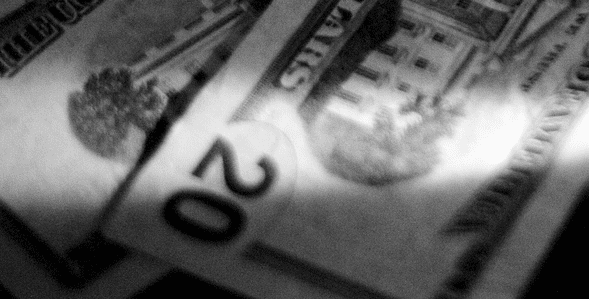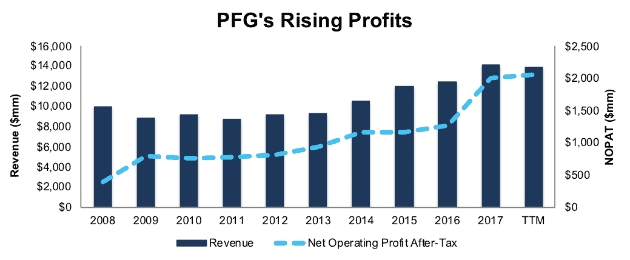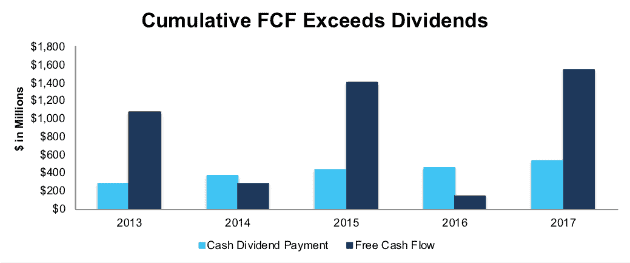Five new stocks make our Safest Dividend Yield Model Portfolio this month, which was made available to members on June 20, 2018.
Recap from May’s Picks
Our Safest Dividend Yield Model Portfolio outperformed the S&P 500 last month. The Model Portfolio rose 4.5% on a price return basis and rose 4.8% on a total return basis. The S&P 500 rose 1.2% on a price return basis and 1.6% on a total return basis. The best performing stocks in the portfolio were large cap stock General Motors (GM), which was up 16%, and small cap stock, National Presto Industries (NPK), which was up 21%. Overall, 12 out of the 20 Safest Dividend Yield stocks outperformed the S&P in May.
This Model Portfolio leverages our Robo-Analyst technology[1], which scales our forensic accounting expertise (featured in Barron’s) across thousands of stocks.[2]
This Model Portfolio only includes stocks that earn an Attractive or Very Attractive rating, have positive free cash flow and economic earnings, and offer a dividend yield greater than 3%. Companies with strong free cash flow provide higher quality and safer dividend yields because we know they have the cash to support the dividend. We think this portfolio provides a uniquely well-screened group of stocks that can help clients outperform.
Featured Stock for June: Principal Financial Group (PFG: $56/share)
Principal Financial Group (PFG), an asset manager and insurance provider, is the featured stock in June’s Safest Dividend Yields Model Portfolio. PFG was also featured as a Long Idea in February 2018 and is currently in our Focus List – Long Model Portfolio.
Since 2008, PFG has grown revenue by 4% compounded annually and after-tax operating profit (NOPAT) by 20% compounded annually. NOPAT margins have increased from 4% in 2008 to 15% over the last twelve months (TTM). The company has also improved its return on invested capital (ROIC) from 3% to 11% over the same time.
Figure 1: PFG Revenue & NOPAT Since 2008
Sources: New Constructs, LLC and company filings
Cumulative Free Cash Flow Supports Dividend Payments
Over the past five years, PFG has increased its annual dividend from $0.98/share to $1.87/share, or 18% compounded annually. This dividend payment has been supported by PFG’s free cash flow. Since 2013, PFG has generated a cumulative $4.4 billion (28% of market cap) in FCF while paying $2.1 billion in dividends.
Companies with strong free cash flow provide higher quality dividend yields because we know the firm has the cash to support its dividend. On the flip side, dividends from companies with low or negative free cash flow cannot be trusted as much because the company may not be able to sustain paying dividends.
Figure 2: PFG’s FCF vs. Dividends Since 2013
Sources: New Constructs, LLC and company filings
PFG Remains Undervalued
At its current price of $56/share, PFG has a price-to-economic book value (PEBV) ratio of 0.7. This ratio means the market expects PFG’s NOPAT to permanently decline by 30%. This expectation seems pessimistic given that PFG has grown NOPAT by 20% compounded annually since 2008.
If PFG can maintain TTM NOPAT margins (15%) and grow NOPAT by just 3% compounded annually for the next 10 years, the stock is worth $89/share – a 59% upside. See the math behind this dynamic DCF scenario.
Critical Details Found in Financial Filings By Our Robo-Analyst Technology
As investors focus more on fundamental research, research automation technology is needed to analyze all the critical financial details in financial filings. Below are specifics on the adjustments we make based on Robo-Analyst findings in Principal Financial Group’s 2017 10-K:
Income Statement: we made $738 million of adjustments with a net effect of removing $298 million in non-operating income (2% of revenue). We removed $220 million related to non-operating expenses and $518 million related to non-operating income. See all adjustments made to PFG’s income statement here.
Balance Sheet: we made $4.8 billion of adjustments to calculate invested capital with a net decrease of $1 billion. The most notable adjustment was $2.9 billion (15% of reported net assets) related to other comprehensive income. See all adjustments to PFG’s balance sheet here.
Valuation: we made $682 million of adjustments with a net effect of decreasing shareholder value by $682 million. There were no adjustments that increased shareholder value. The largest adjustment to shareholder value was $254 million in underfunded pensions. This adjustment represents 2% of PFG’s market value. Despite the net decrease in shareholder value, PFG remains undervalued.
This article originally published on June 26, 2018.
Disclosure: David Trainer, Kyle Guske II, and Sam McBride receive no compensation to write about any specific stock, style, or theme.
Follow us on Twitter, Facebook, LinkedIn, and StockTwits for real-time alerts on all our research.
[1] Harvard Business School features the powerful impact of our research automation technology in the case New Constructs: Disrupting Fundamental Analysis with Robo-Analysts.
[2] Ernst & Young’s recent white paper “Getting ROIC Right” proves the superiority of our holdings research and analytics.


